Simulated Digestion of Polygonatum sibiricum Extract in Vitro and Its Effect on Intestinal Flora
-
摘要: 目的:采用体外模拟消化结合16S rDNA高通量测序技术探究黄精提取物活性成分含量的变化及对肠道菌群调节作用。方法:通过加热回流法制备黄精提取物,测定体外模拟消化前后黄精提取物中多糖、皂苷和黄酮的含量,并考察其对α-葡萄糖苷酶的抑制能力。基于16S rDNA高通量测序分析黄精提取物对肠道菌群的影响。结果:黄精提取物含有多糖、皂苷、黄酮的含量分别为0.4732、0.0632和0.0754 mg/mL。经体外模拟消化后,多糖、皂苷、黄酮的含量均显著降低(P<0.05),且加入消化酶组显著低于未加入消化酶组(P<0.05)。另外,消化后黄精提取物对α-葡萄糖苷酶抑制能力显著降低(P<0.05)。随着体外发酵时间的增加,黄精提取物处理组粪便发酵的pH从初始的6.85下降到4.13,48 h后发酵液呈弱酸性。肠道菌群分析表明,黄精提取物能改变肠道菌群结构,尤其在门、属水平上具有一定程度的改善作用。黄精提取物可增加厚壁菌门(Firmicutes)丰度,降低变形菌门(Proteobacteria)的丰度,增加双歧杆菌属(Bifidobacterium)相对丰度,并且显著降低纺锤链杆菌属(Fusicatenibacter)相对丰度(P<0.05)。结论:黄精提取物经体外模拟消化后多糖、皂苷和黄酮的含量显著降低(P<0.05),对α-葡萄糖苷酶的抑制作用降低,可改变肠道微生物群落结构,对肠道菌群具有一定的调节作用。本研究可为黄精精深加工及调节肠道菌群方面提供理论参考。Abstract: Objective: To explore the changes of active components in Polygonatum sibiricum extract and its regulation on intestinal flora by in vitro simulated digestion combined with 16S rDNA high-throughput sequencing technology. Methods: P. sibiricum extract was prepared by heating reflux method. The contents of polysaccharides, saponins and flavonoids in P. sibiricum extract before and after simulated digestion in vitro were determined, and its inhibitory ability on α-glucosidase was investigated. The effect of P. sibiricum extract on intestinal flora was analyzed based on 16S rDNA high-throughput sequencing. Results: The P. sibiricum extract contained polysaccharides, saponins and flavonoids, and the contents were 0.4732, 0.0632 and 0.0754 mg/mL, respectively. After in vitro simulated digestion, the contents of polysaccharides, saponins and flavonoids were significantly reduced (P<0.05), and the addition of digestive enzymes was significantly lower than that of the group without digestive enzymes (P<0.05). In addition, the inhibitory ability of P. sibiricum extract on α-glucosidase was significantly reduced after digestion (P<0.05). With the increase of in vitro fermentation time, the pH of the fecal fermentation broth in the P. sibiricum extract treatment group decreased from the initial 6.85 to 4.13, and the fermentation broth was weakly acidic after 48 h. The analysis of intestinal flora showed that P. sibiricum extract could change the structure of intestinal flora, especially at the level of phylum and genus. P. sibiricum extract increased the abundance of Firmicutes, decreased the abundance of Proteobacteria, increased the relative abundance of Bifidobacterium, and significantly decreased the relative abundance of Fusicatenibacter (P<0.05). Conclusion: The contents of polysaccharides, saponins and flavonoids in P. sibiricum extract were significantly decreased after in vitro simulated digestion (P<0.05), and the inhibitory effect on α-glucosidase was decreased. It could change the structure of intestinal microbial community and had a certain regulatory effect on intestinal flora. This study can provide a theoretical reference for the deep processing of P. sibiricum and the targeted regulation of intestinal flora.
-
Keywords:
- Polygonatum sibiricum /
- extract /
- digestion /
- active components /
- fermentation /
- intestinal flora
-
黄精(Polygonatum sibiricum Red.)为百合科、黄精属多年生草本,属于药食同源植物[1]。黄精的主要活性成分是多糖、黄酮、木质素、甾体皂苷、蒽醌、氨基酸、生物碱等[2],现代研究发现具有抗肿瘤、抗氧化、降血糖、调节血脂等作用[3]。黄精作为药食同源植物,如何被人体消化及利用以发挥其功能活性逐渐成为近年来的研究热点。体内研究价格昂贵且探索范围有限,体外消化模型和粪便发酵方法的建立能够更简便、更可控、更直观地展现食物消化及吸收过程[4]。
肠道微生物与人类健康密切相关,肠道细菌生态系统对人体疾病、免疫调控等方面起着重要的作用[5]。肠道微生物群处于一个动态平衡的状态,而肠道微生物群的紊乱会造成菌群组成和功能失衡,导致机体功能失调,引发各种疾病[6]。已有研究表明药食同源植物中的有效成分如多糖,能够对肠道菌群失调起到一定调节作用[7];藜麦壳皂苷可调节肠道菌群来缓解小鼠的高脂血症[8];山楂叶总黄酮通过调节高脂血症大鼠脂质代谢和肠道菌群达到降血脂的作用[9]。大分子类物质在消化道难于降解,但能通过肠道微生物被降解并利用[10],随着人们对于活性成分的深入研究与开发,对于黄精提取物的研究不能局限于通过动物模型或细胞模型来研究其生物活性。多花黄精能够通过体外发酵调节肠道菌群[11]。因此,研究黄精提取物的消化及酵解对黄精功能作用的发挥尤为重要。
本文通过体外模拟消化模型探讨黄精提取物在人体各阶段(胃、肠)的消化过程中多糖、皂苷与黄酮含量变化以及对α-葡萄糖苷酶的抑制作用,并通过16S rDNA高通量测序对黄精提取物体外发酵过程中肠道菌群进行分析。探讨黄精提取物体外消化及发酵特性,该研究有望为黄精的加工利用、营养价值提升和相关功能食品的研发提供理论依据。
1. 材料与方法
1.1 材料与仪器
黄精 黑龙江省阿城购买,鉴定为(P. sibiricum)的干燥根茎;菝葜皂苷元标准品(HPLC≥98%)、芦丁标准品(含量87.8%) 上海源叶生物科技有限公司;葡萄糖标准品(50%~95%) 天津市天力化学试剂有限公司;实验动物:10只8周龄雄性昆明小鼠(初始小鼠体重为18~22 g,许可证号为SCXK(鲁)20190003)、高糖高脂饲料 济南朋悦实验动物繁育有限公司;链脲佐菌素(Streptozotocin,STZ) 美国Sigma公司;猪胆盐、胃蛋白酶(猪胃粘膜,酶活为1:30000)、胰蛋白酶(猪胰,酶活为250 U/mg)、α-葡萄糖苷酶液体(700000 U/mL)、可溶性淀粉、粘蛋白、胰蛋白胨、阿拉伯半乳聚糖、瓜尔豆胶、L-半胱氨酸盐酸盐、蛋白胨、酵母浸粉、香草醛、无水乙醇、高氯酸、浓硫酸、浓盐酸等 均为国产分析纯。
Epoch-2型酶标仪 美国伯腾仪器公司;FW100高速万能粉碎机、DH6000A型恒温培养箱 天津市泰斯特仪器有限公司;B-220恒温水浴锅 上海亚荣生化仪器厂;BS-224-S电子分析天平 北京赛多利斯科学仪器公司;RE52CS旋转蒸发器 巩义市予华仪器有限责任公司;SB25-12DTD超声波清洗机 宁波新芝生物科技股份有限公司;LHS-18A手提式压力蒸汽灭菌器 宁波凌宏医疗器械科技有限公司;LC-LX-H185C型高速离心机 上海力辰仪器科技有限公司;PHS-3D精密pH计 上海沪西分析仪器厂;G-425-1型血糖检测仪 海尔公司。
1.2 实验方法
1.2.1 黄精提取物的制备
参考马娟等[12]的方法,称取黄精粉末5 g,加入100 mL蒸馏水(料液比为1:20),加热回流2 h,重复3次,合并提取液并3000 r/min离心15 min,旋转蒸发仪浓缩至原体积的1/10倍,即为黄精提取物(PY)。
1.2.2 体外模拟消化
表 1 胃、肠工作液配制比例Table 1. Proportion of gastrointestinal and intestinal working fluids试剂 胃工作液(mL) 肠工作液(mL) 氯化钾(0.2 mol/L) 6.9 6.8 磷酸二氢钾(0.5 mol/L) 0.9 0.8 碳酸氢钠(1 mol/L) 12.5 42.5 氯化钠(2 mol/L) 11.8 9.6 氯化镁(0.15 mol/L) 0.4 1.1 碳酸铵(0.5 mol/L) 0.5 − 胃消化阶段消化液的配制:取胃工作液100 mL,加入胃蛋白酶0.03 g,用1 mol/L HCl将pH调至2,得到胃消化液。取黄精提取物10 mL加入到胃消化液中,37 ℃恒温振荡2 h,分别在0、0.5、1、1.5、2 h时取消化液2 mL,沸水浴15 min灭酶活,储存待测(PGE),余下的消化液做进一步消化反应。同时以不加胃蛋白酶的消化体系为对照(PG),以蒸馏水代替样品体系为空白(PGK)。
肠消化阶段消化液的配制:配制4%猪胆盐溶液。取肠工作液100 mL加入胰酶0.04 g(酶活:100 U/mL),1 mol/L NaOH将pH调至7,加入猪胆盐溶液12.5 mL,经过胃部消化的黄精提取物溶液10 mL,37 ℃下恒温振荡6 h,沸水浴15 min灭酶活,储存待测(PIE)。同时以不加肠蛋白酶的消化体系为对照(PI),以蒸馏水代替样品体系为空白(PIK)。
1.2.3 黄精提取物体外消化液成分测定
测定黄精提取物(PY)、胃消化液(PGE)、不加胃蛋白酶的胃消化液(PG)、肠消化液(PIE)、不加肠蛋白酶的消化液(PI)中多糖、皂苷、黄酮的含量。
1.2.3.1 多糖的测定
参考杨静等[16]的方法,采用苯酚-硫酸法测定。以葡萄糖质量浓度和其吸光度值绘制葡萄糖标准曲线,回归方程为y=7.0562x+0.0965,R2=0.999。
1.2.3.2 皂苷的测定
参考Luo等[17]的方法,采用香草醛-高氯酸比色法测定总皂苷含量。以菝葜皂苷元为标准品,绘制标准曲线,回归方程为y=0.0018x+0.0118,R2=0.9981。
1.2.3.3 黄酮的测定
取0.5 mL模拟胃、肠消化液,以芦丁为标准品,参考Shahnaz等[18]的方法,在波长510 nm处测定吸光值测定总黄酮含量,回归方程为y=5.2671x+0.0131,R2=0.9999。
1.2.4 α-葡萄糖苷酶的抑制能力测定
对α-葡萄糖苷酶的抑制作用参照Liu等[19]的方法并略有修改。取10 μL α-葡萄糖苷酶液体加蒸馏水多次定容为0.186 U/mL的α-葡萄糖苷酶溶液待用。将125 μL磷酸盐缓冲液(5 mmol/L,pH6.8),依次将25 μL的0、0.5、1、1.5、2 h胃消化(PGE)和肠消化(PIE)黄精提取消化反应物,25 μL α-葡萄糖苷酶溶液加入96孔酶标仪孔板中,然后将混合物在37 ℃下孵育20 min。同时,将对硝基苯基-β-吡喃葡萄糖苷(PNPG,8.92 mmol/L)在37 ℃水浴中预孵育。然后,将20 μL PNPG加入混合物中,并将新混合物在37 ℃下孵育20 min。最后,加入150 μL Na2CO3(200 mmol/L)以结束反应。在405 nm处测吸光度。
α-葡萄糖苷酶的抑制率(%)=(1−A样品吸光度值A空白对照组吸光度值)×100 (1) 1.2.5 体外发酵
1.2.5.1 体外发酵培养基的制备
体外发酵培养基[20−21](蒸馏水定容至1 L):可溶性淀粉5 g、蛋白胨5 g、胰蛋白胨5 g、酵母提取物4.5 g、NaCl 4.5 g、KCl 4.5 g、果胶2 g、粘蛋白4 g、酪蛋白(干酪素)3 g、阿拉伯半乳聚糖2 g、NaHCO3 1.5 g、MgSO4·H2O 0.69 g、瓜尔豆胶1 g、L-半胱氨酸盐酸盐0.8 g、磷酸二氢钾0.5 g、磷酸氢二钾0.5 g、猪胆盐0.4 g、CaCl2 0.08 g、 FeSO4·7H2O 0.5 g、吐温80 1 mL、刃天青4 mL(0.025%,m/V),121 ℃下灭菌15 min备用。
1.2.5.2 粪便处理
参考文献[22−23]方法,分别收集健康小鼠、前期建模成功的糖尿病小鼠新鲜粪便(实验动物伦理审查许可证号:2020007。小鼠饲养环境,室内温度保持在25±3 ℃,湿度保持在50%±10%,光暗交替各12 h,并保持通风。小鼠饲喂高糖高脂饲料,一个月后使用STZ进行腹腔注射建模,注射剂量为60 mg/kg,48 h内注射两次。3 d后将小鼠禁食12 h并尾部采血测定血糖,血糖值≥11.1 mmol/L即为建模成功,可纳入实验)于10 mL无菌EP离心管中,并用无菌改良生理盐水溶液(半胱氨酸-HCl 10.0 g/L和NaCl 9.0 g/L)按1:10(w/v)的比例稀释。粪便用无菌纱布过滤,收集滤液得到粪便菌悬液备用。取8 mL体外发酵培养基,2 mL(3 mg/mL)黄精提取物,8 mL粪便菌悬液混匀,健康小鼠组和糖尿病小鼠组分别命名为NFE组、TFE组;使用等量无菌水代替黄精提取物作为对照组,分别命名为NFC组、TFC组。
1.2.5.3 体外厌氧发酵培养
将上述混合发酵液于37 ℃厌氧条件下培养48 h。每组实验5个重复。分别在发酵 0、6、12、24、48 h后取样,用0.4 mL 0.5%硫酸铜或20%乙腈停止发酵[24−27]。
1.2.5.4 体外发酵pH的测定
本实验采用pH计对发酵液进行pH的测定,在体外发酵0、6、12、24、48 h时取出相应的发酵液,每组每管2 mL,测量三次,取平均值,记录数据。
1.2.5.5 16S rDNA高通量测序
参考文献[28]方法,将发酵培养48 h的培养液于−80 ℃冻存,后送至杭州联川生物技术股份有限公司进行16S rDNA高通量测序,分析其菌群变化情况。选取16S DNA的V3-V4区进行基因扩增与测序。引物序列:341正义链(5′-CCTACGGGNGGCWGCAG-3′,805反义链(5′-GACTACHVGGGTATCTAATCC-3′)。扩增反应体系:聚合酶热启动2x试剂12.5 μL、正向引物和反向引物2.5 μL、模板DNA 50 ng、最后加双蒸水(ddH2O)至25 μL。扩增反应条件:98 ℃,30 s;98 ℃,10 s;54 ℃,30 s,进行35个循环;72 ℃,45 s;72 ℃,10 min。PCR产物经2%琼脂糖凝胶电泳确证,由核酸纯化磁珠(Beckman Coulter Genomics,Danvers,MA,USA)纯化,量子位(Invitrogen,USA)定量。扩增子池用于测序,扩增子文库的大小和数量分别在Adilent 2100生物分析仪(Aoilent,美国)和llumina (kapa Biosciences,Woburn,MA,美国)的文库定量试剂盒上进行评估。在NovaSeg PE250平台上对库进行排序。构建llumina平台文库,进行llumina 测序。
1.3 数据处理
每个实验重复三次,运用SPSS 21.0软件的单因素方差分析方法(ANOVA)进行显著性分析(P<0.05表示差异有统计学意义);通过Origin 2021软件进行作图。
2. 结果与分析
2.1 体外消化对黄精提取物成分含量的影响
黄精提取物经体外胃肠道模拟消化后,其中多糖、皂苷、黄酮含量的变化如表2所示。与消化前(PY组)相比,胃消化组(PGE组)黄精提取物中多糖、皂苷、黄酮含量分别降低了59.55%、63.29%、81.03%,肠消化组(PIE组)中的多糖、皂苷、黄酮含量较胃消化组(PGE组)的含量分别降低了52.92%、60.34%、35.66%,可知在胃肠消化过程中,多糖、皂苷、黄酮含量均显著降低(P<0.05);在胃消化阶段,PGE组多糖、皂苷、黄酮含量均低于PG组。胃消化阶段是由酸性条件和胃消化酶共同作用对胃中成分进行消化分解,这与范利君等[29]酸性环境以及胃蛋白酶均能使总黄酮含量降低观点一致。酶的加入影响黄精提取物中多糖、皂苷、黄酮含量的变化,肠消化阶段也同理。因此,该结果表明黄精提取物在胃肠消化过程中受猪胆盐、胃蛋白酶和肠蛋白酶等的影响。在体外模拟胃肠消化阶段,多糖、皂苷、黄酮物质含量均出现下降趋势,可能是胃肠消化过程中活性成分物质不稳定被降解,也可能是消化酶与其结合或把其分解成更小分子物质。
表 2 黄精提取物胃肠道模拟消化前后活性成分含量Table 2. Contents of active components in P. sibiricum extract before and after gastrointestinal simulated digestion黄精提取物PY 胃消化组PGE 不加胃蛋白酶消化组PG 肠消化组PIE 不加肠蛋白酶消化组PI 多糖(mg/mL) 0.4732±0.0042a 0.1914±0.0075d 0.4283±0.0203b 0.0901±0.0093e 0.2742±0.0127c 皂苷(mg/mL) 0.0632±0.0134a 0.0232±0.0188c 0.0553±0.0058b 0.0092±0.0224e 0.0123±0.0257d 黄酮(mg/mL) 0.0754±0.0072a 0.0143±0.0049d 0.0443±0.0021b 0.0092±0.0024e 0.0181±0.0029c 注:同行小写字母不同表示样品间的成分含量在P<0.05水平上存在显著性差异。 2.2 黄精提取物在体外胃肠道消化过程中对α-葡萄糖苷酶的抑制作用
α-葡萄糖苷酶参与人体糖代谢,抑制其活性有助于延缓肠道中碳水化合物的吸收,从而达到降糖效果[30]。黄精提取物经体外模拟胃肠消化对α-葡萄糖苷酶的抑制作用如图1所示,随着消化时间的增加,所有样品均对α-葡萄糖苷酶的抑制作用逐渐减少。PGE组对α-葡萄糖苷酶的抑制率由0 h的98.42%降低至2 h的86.79%,PIE组对α-葡萄糖苷酶的抑制率由0 h的86.56%降低至2 h的38.33%。经胃肠道消化后,PGE组和PIE组的α-葡萄糖苷酶抑制作用显著降低(P<0.05),这可能与多糖、皂苷、黄酮的减少有关[31]。
2.3 体外发酵过程中发酵液pH测定
肠道微生物能够利用不被消化的化合物,产生有机酸、短链脂肪酸等一系列代谢产物,进而改变肠道生态环境的酸碱度[32],因此本研究考察了体外发酵过程中pH的变化,如图2所示。由图2可知,在体外发酵过程中黄精提取物干预前后健康小鼠和糖尿病小鼠粪便发酵pH都呈逐渐下降的趋势,在发酵前12 h,pH下降迅速。NFE组在发酵期间48 h内pH由6.85下降至4.13。黄精提取物干预组的pH明显低于对照组。推测可能由于肠道微生物代谢过程中利用了黄精提取物中的活性成分,产生了大量的有机酸、短链脂肪酸等,从而导致发酵过程中pH下降,这与刘晓丹等[32]多花黄精多糖调节肠道菌群,促进短链脂肪酸产生的观点相符合。
2.4 体外发酵对肠道菌群结构的影响
2.4.1 多样性分析
α-多样性主要通过Chao1、Observed species、Shannon、Simpson等指数来反映丰富度和均匀性。曲线平缓显示测序的数据准确可靠,如图3所示,TFC组与NFC组间的α-多样性指数无显著差异;黄精提取物干预前后α-多样性指数也无明显差异,说明样本中物种分布较为均匀,取得的测序结果适宜用于分析。
对所有发酵液混合样本的16S rDNA基因扩增子序列进行高通量测序、比对后,所获得的OTU表经过随机重抽样后进行基于Bray-Curtis距离的主坐标分析(Principal Component Analysis,PCA),通过一系列的特征值和特征向量进行排序后,研究组内及组间相似性或差异性。如果样品距离越接近,表示样本菌群结构越相似,反之,则表示样本菌群结构差异越大。PCA主要反映样本之间是否具有显著的微生物群落差异。图中每一个点代表一个测序样本,坐标轴能最大程度反应样品间差异的维度。如图4所示,β-多样性分析显示不同处理组样品两两分离,说明不同处理组的微生物组成存在差异性,肠道菌群组成发生了一定程度的改变。主成分PCA1与PCA2占比分别为52.09%、31.93%的差异度,NFC、NFE、TFC、TFE组间基本呈现不同的区域,各自聚集,组间菌群组成结构存在差异表明其组间样本菌群结构差异较大,菌群结构较为复杂。
2.4.2 肠道微生物组成分析
Venn图是统计多个组别中所共有和独有的物种数目,可以比较直观地看出不同环境样本中物种组成情况。通过分析各组之间的韦恩图可以体现各组微生物群独有的和共有的数目,主要用于比较组间微生物的重叠程度以及相似度。肠道菌群在基因水平上分布的结果如图5所示,NFC组含560个、NFE组含有450个、TFC组含有609个、TFE组含407个。NFC组独有260个、TFC独有289个、TFE独有99个、NFE独有150个,四组共有105个重叠,即NFE组<NFC组;TFE组<TFC组,其中TFE组OTU个数最少,说明添加黄精提取物可以改变肠道菌群多样性。
2.4.3 肠道微生物相对丰度差异的分析
根据16S rDNA测序特点,本研究将从菌门和菌属水平对发酵后肠道菌群组成结构进行分析。如图6所示,在门水平上,厚壁菌门(Firmicutes)、拟杆菌门(Bacteroidetes)、放线菌门(Actinobacteria)和变形菌门(Proteobacteria)是肠道菌群的优势菌群。发酵能产生大量短链脂肪酸且能够提升有益菌如厚壁菌门、拟杆菌门等的丰度,改善人体屏障功能,增强免疫力,预防肠道疾病的发生[33]。相对于NFC组,NFE组中厚壁菌门(Firmicutes)、拟杆菌门(Bacteroidetes)相对丰度显著增加(P<0.05),相对于TFC组,TFE组中厚壁菌门(Firmicutes)、拟杆菌门(Bacteroidetes)相对丰度也显著增加(P<0.05)。放线菌门中包含益生菌如双歧杆菌,能够通过产生醋酸盐保护宿主免受肠道致病性感染[32]。NFE组较NFC组放线菌门(Actinobacteria)相对丰度显著增加(P<0.05)。变形菌门的增加常伴随着代谢紊乱和营养不良,导致免疫失调和肠道疾病的发生[34],NFE组较NFC组放线菌门(Actinobacteria)相对丰度显著降低(P<0.05),TFE组较TFC组放线菌门(Actinobacteria)相对丰度也显著降低(P<0.05),即加入黄精提取物(NFE、TFE)组均能使变形菌门丰度降低。结果表明,黄精提取物可以使肠道菌群组成发生改变,对肠道菌群稳态起到一定作用,能够调节宿主健康。
由图7可知,在属水平上,共测得225个属,其中有31个菌属的相对丰度均高于0.1%。巨单孢菌属(Megasphaera)、拟杆菌属(Bacteroides)、柯林斯氏菌(Collinsella)、普拉梭菌属(Faecalibacterium)、双歧杆菌属(Bifidobacterium)是排名前五的肠道菌群的优势菌属。其中,巨单孢菌属(Megasphaera)是促进短链脂肪酸产生的有益菌,能够促进乙酸、丙酸和丁酸的分泌对宿主健康产生有益影响[35]。拟杆菌属(Bacteroides)、柯林斯氏菌(Collinsella)可通过多种机制应对炎症刺激,协助宿主机体对免疫反应做出应答,维护机体免疫系统平衡[36]。普拉梭菌属(Faecalibacterium)约占整个肠道菌群含量的5%,是肠道中最主要的产丁酸盐菌,对维护肠道健康具有重要作用[37]。双歧杆菌属(Bifidobacterium)具有抗发炎作用而被认为是有益菌,其丰度增加能改善肠道环境[38]。从整体肠道菌群的属水平结构来看,NFC组主要优势菌属为巨单孢菌属(Megasphaera)、拟杆菌属(Bacteroides)、柯林斯氏菌(Collinsella),而黄精处理NFE组中优势菌属主要为拟杆菌属(Bacteroides)、柯林斯氏菌(Collinsella)、普拉梭菌属(Faecalibacterium),黄精提取物干预前后优势菌属有所变化。同理TFC组和TFE组比较,经黄精提取物干预前后,优势菌属也有所改变,说明黄精提取物能够影响优势菌属的种类。
2.4.4 在属水平上的热图分析
为分析各样品组肠道菌群之间的相似性和差异性,取属水平上相对丰度高的肠道菌群进行群落组分相似度的聚类式热图统计分析,如图8所示,蓝色表示缺乏富集。从图上可以看出,在属水平上,黄精提取物干预前后NFC组、NFE组、TFC组和TFE组菌群差异较明显。各组在图中标志区域存在明显的差异,区域存在较为明显差异的菌属有双歧杆菌属(Bifidobacterium)、纺锤链杆菌属(Fusicatenibacter)等。双歧杆菌属(Bifidobacterium)是有益菌,TFE组和NFE组表达分别高于TFC组和NFC组;纺锤链杆菌属(Fusicatenibacter)参与宿主的血脂代谢,在不同病理状态丰度存在较大差异。在TFC组丰度相对较高,TFE组纺锤链杆菌属(Fusicatenibacter)区域颜色偏蓝,丰度相对较低;说明在TFC、TFE两组中,含黄精处理组可以对肠道菌群属水平有改变,这可能与黄精提取物中的成分有关。
3. 结论
本研究考察了在体外模拟消化过程中黄精提取物中多糖、皂苷和黄酮含量的变化及对肠道菌群的调节作用。结果表明,黄精提取物在模拟体外胃肠消化过程中,多糖、皂苷和黄酮含量减少,胃反应组(PGE组)黄精提取物中多糖、皂苷、黄酮含量分别降低了59.55%、63.29%、81.03%,肠消化组(PIE组)中的多糖、皂苷、黄酮含量较胃消化组(PGE组)的含量分别降低了52.92%、60.34%、35.66%,但活性成分不会完全被人体消化,可以抵达到大肠被肠道菌群所利用。经消化后黄精提取物对α-葡萄糖苷酶抑制作用出现了不同程度的下降。PGE组对α-葡萄糖苷酶的抑制率由0 h的98.42%降低至2 h的86.79%,PIE组对α-葡萄糖苷酶的抑制率由0 h的86.56%降低至2 h的38.33%。随着体外发酵时间的增加,黄精提取物处理组粪便发酵的pH从初始的6.85下降到4.13,48 h后发酵液呈弱酸性。肠道菌群分析表明,黄精提取物能改变肠道菌群结构,尤其在门、属水平上具有一定程度的改善作用。经16S rDNA分析,黄精提取物可以改变肠道微生物群的多样性和组成。在门水平上,黄精提取物干预后,增加了厚壁菌门(Firmicutes)、拟杆菌门(Bacteroidetes)、放线菌门(Actinobacteria)丰度、降低了变形菌门(Proteobacteria)的丰度;在属水平上,巨单孢菌属(Megasphaera)、拟杆菌属(Bacteroides)、柯林斯氏菌(Collinsella)、普拉梭菌属(Faecalibacterium)、双歧杆菌属(Bifidobacterium)为优势菌属,纺锤链杆菌属(Fusicatenibacter)表达下调,双歧杆菌属(Bifidobacterium)表达上调。因此,黄精提取物能够调节肠道微生物的组成与多样性,抑制有害菌,促进有益菌生长。本研究为黄精的开发利用提供了理论支撑和科学依据。
-
表 1 胃、肠工作液配制比例
Table 1 Proportion of gastrointestinal and intestinal working fluids
试剂 胃工作液(mL) 肠工作液(mL) 氯化钾(0.2 mol/L) 6.9 6.8 磷酸二氢钾(0.5 mol/L) 0.9 0.8 碳酸氢钠(1 mol/L) 12.5 42.5 氯化钠(2 mol/L) 11.8 9.6 氯化镁(0.15 mol/L) 0.4 1.1 碳酸铵(0.5 mol/L) 0.5 − 表 2 黄精提取物胃肠道模拟消化前后活性成分含量
Table 2 Contents of active components in P. sibiricum extract before and after gastrointestinal simulated digestion
黄精提取物PY 胃消化组PGE 不加胃蛋白酶消化组PG 肠消化组PIE 不加肠蛋白酶消化组PI 多糖(mg/mL) 0.4732±0.0042a 0.1914±0.0075d 0.4283±0.0203b 0.0901±0.0093e 0.2742±0.0127c 皂苷(mg/mL) 0.0632±0.0134a 0.0232±0.0188c 0.0553±0.0058b 0.0092±0.0224e 0.0123±0.0257d 黄酮(mg/mL) 0.0754±0.0072a 0.0143±0.0049d 0.0443±0.0021b 0.0092±0.0024e 0.0181±0.0029c 注:同行小写字母不同表示样品间的成分含量在P<0.05水平上存在显著性差异。 -
[1] CHEN Zefu, LUO Jiayuan, JIA Mingjie, et al. Polygonatum sibiricum saponin exerts beneficial hypoglycemic effects in type 2 diabetes mice by improving hepatic insulin resistance and glycogen synthesis-related proteins[J]. Nutrients,2022,14(24):5222. doi: 10.3390/nu14245222
[2] JING Yongshuai, YAN Meng, ZHANG Hao, et al. Effects of extraction methods on the physicochemical properties and biological activities of polysaccharides from Polygonatum sibiricum[J]. Foods,2023,12(10):2088. doi: 10.3390/foods12102088
[3] 陶爱恩, 张晓灿, 杜泽飞, 等. 黄精属植物中黄酮类化合物及其药理活性研究进展[J]. 中草药,2018,49(9):2163−2171. [TAO Aien, ZHANG Xiaocan, DU Zefei, et al. Research progress on flavonoids in plants of Polygonatum Mill. and their pharmacological activities[J]. Chinese Traditional and Herbal Drugs,2018,49(9):2163−2171.] TAO Aien, ZHANG Xiaocan, DU Zefei, et al. Research progress on flavonoids in plants of Polygonatum Mill. and their pharmacological activities[J]. Chinese Traditional and Herbal Drugs, 2018, 49(9): 2163−2171.
[4] 景永帅, 孙丽丛, 张瑞娟, 等. 玉竹多糖的体外消化特性及其与乳杆菌和大肠杆菌的相互作用[J]. 食品研究与开发,2023,44(2):21−28. [JING Yongshuai, SUN Licong, ZHANG Ruijuan, et al. In vitro digestion characteristics of Polygonatum odoratum polysaccharides and their interaction with Lactobacillus bulgaricus and Escherichia coli[J]. Food Research and Development,2023,44(2):21−28.] JING Yongshuai, SUN Licong, ZHANG Ruijuan, et al. In vitro digestion characteristics of Polygonatum odoratum polysaccharides and their interaction with Lactobacillus bulgaricus and Escherichia coli[J]. Food Research and Development, 2023, 44(2): 21−28.
[5] 陈亚雯, 杨军义, 毛红. 基于肠道菌群探讨中医药从脾论治慢性便秘[J]. 中国中医药现代远程教育, 2023, 21(17):81-83. [CHEN Yawen, YANG Junyi, MAO Hong. Traditional Chinese medicine in the treatment of chronic constipation from spleen based on intestinal flora[J]. Chinese Medicine Modern Distance Education of China, 2023, 21(17):81-83.] CHEN Yawen, YANG Junyi, MAO Hong. Traditional Chinese medicine in the treatment of chronic constipation from spleen based on intestinal flora[J]. Chinese Medicine Modern Distance Education of China, 2023, 21(17): 81-83.
[6] 丁凤玫, 邢海涛, 赵菁莉. 中医药调整肠道微生态的研究进展[J]. 中医药学报,2022,50(4):79−85. [DING Fengmei, XING Haitao, ZHAO Jingli. Research advances of TCM in modulating intestinal microecology[J]. Acta Chinese Medicine and Pharmacology,2022,50(4):79−85.] DING Fengmei, XING Haitao, ZHAO Jingli. Research advances of TCM in modulating intestinal microecology[J]. Acta Chinese Medicine and Pharmacology, 2022, 50(4): 79−85.
[7] SHI Junling. Editorial:Reviews in the impact of gut microbiota in health and disease[J]. Frontiers in Microbiology,2023,14:1230925.
[8] YU Yuan, JI Xueying, SONG Linmeng, et al. Saponins from Chenopodium quinoa Willd. husks alleviated high-fat diet-induced hyperlipidaemia via modulating the gut microbiota and multiple metabolic pathways[J]. Journal of the Science of Food and Agriculture, 2023.
[9] HU Huiming, WENG Jiajun, CUI Can, et al. The hypolipidemic effect of hawthorn leaf flavonoids through modulating lipid metabolism and gut microbiota in hyperlipidemic rats[J]. Evidence-Based Complementary and Alternative Medicine,2022,2022:3033311.
[10] 樊莹润, 郑婷婷, 李泽林, 等. 黄皮疣柄牛肝菌多糖体外模拟消化和酵解特性研究[J/OL]. 食品科学技术学报, 2024, 1−12. http://kns.cnki.net/kcms/detail/10.1151.TS.20231106.1452.002.html. [FAN Yingrun, ZHENG Tingting, LI Zelin, et al. Study on in vitro simulated digestion and fermentation characteristics of polysaccharides from Leccinum Crocipodium (Letellier.) Watliag[J/OL]. Journal of Food Science and Technology, 2024, 1−12. http://kns.cnki.net/kcms/detail/10.1151.TS.20231106.1452.002.html.] FAN Yingrun, ZHENG Tingting, LI Zelin, et al. Study on in vitro simulated digestion and fermentation characteristics of polysaccharides from Leccinum Crocipodium (Letellier.) Watliag[J/OL]. Journal of Food Science and Technology, 2024, 1−12. http://kns.cnki.net/kcms/detail/10.1151.TS.20231106.1452.002.html.
[11] CHENG Yanan, TIAN Shenglan, CHEN Yi, et al. Structural characterization and in vitro fermentation properties of polysaccharides from Polygonatum cyrtonema[J]. International Journal of Biological Macromolecules,2024,258(P1):128877.
[12] 马娟, 张怡雯, 董晨阳, 等. 不同产地黄精的化学成分及体外降血糖功效的比较[J]. 现代食品科技,2022,38(8):116−126. [MA Juan, ZHANG Yiwen, DONG Chenyang, et al. Comparison of the chemical constituents and in vitro hypoglycemic effect of Polygonatum from different origins[J]. Modern Food Science and Technology,2022,38(8):116−126.] MA Juan, ZHANG Yiwen, DONG Chenyang, et al. Comparison of the chemical constituents and in vitro hypoglycemic effect of Polygonatum from different origins[J]. Modern Food Science and Technology, 2022, 38(8): 116−126.
[13] ANDRÉ B, LOTTI E, MARIE A, et al. INFOGEST static in vitro simulation of gastrointestinal food digestion[J]. Nature Protocols,2019,14(4):991−1014. doi: 10.1038/s41596-018-0119-1
[14] WU Dingtao, AN Lingyan, LIU Wen, et al. In vitro fecal fermentation properties of polysaccharides from Tremella fuciformis and related modulation effects on gut microbiota[J]. Food Research International,2022,156:111185. doi: 10.1016/j.foodres.2022.111185
[15] LI Qi, WU Weijie, CHEN Hangjun, et al. In vitro fecal fermentation characteristics of bamboo shoot (Phyllostachys edulis) polysaccharide[J]. Food Chemistry:X,2021,11:100129.
[16] 杨静, 李博, 张延妮. 拐枣多糖的反复冻融回流工艺优化及抗氧化活性研究[J]. 食品工业科技,2022,43(19):273−279. [YANG Jing, LI Bo, ZHANG Yanni. Optimization of repeated freezing-thawing reflux for extraction of polysaccharide from Hovenia dulcis and its antioxidant activity[J]. Science and Technology of Food Industry,2022,43(19):273−279.] YANG Jing, LI Bo, ZHANG Yanni. Optimization of repeated freezing-thawing reflux for extraction of polysaccharide from Hovenia dulcis and its antioxidant activity[J]. Science and Technology of Food Industry, 2022, 43(19): 273−279.
[17] LUO Jiayuan, JIANG Lu, GAO Bo, et al. Comprehensive in silico analysis of the probiotics, and preparation of compound probiotics-Polygonatum sibiricum saponin with hypoglycemic properties[J]. Food Chemistry,2023,404(PA):134569.
[18] SHAHNAZ F H, SAFA L, ELHAM R, et al. Correlation between total phenolic and flavonoid contents and biological activities of 12 ethanolic extracts of Iranian propolis[J]. Food Science & Nutrition,2023,11(7):3356.
[19] LIU Qingqing, WANG Liangsheng, ZHANG Dasheng. Characterization of the phytochemical content, antioxidant activity and inhibition capacity against α-glucosidase of different flower parts of seven lotuses (Nelumbo)[J]. Scientia Horticulturae,2023,316:112007. doi: 10.1016/j.scienta.2023.112007
[20] LUO Jiayuan, CHAI Yangyang, ZHAO Min, et al. Hypoglycemic effects and modulation of gut microbiota of diabetic mice by saponin from Polygonatum sibiricum[J]. Food & Function,2020,11(5):.4327−4338.
[21] HU Wei, DI Qing, LIANG Tao, et al. Effects of in vitro simulated digestion and fecal fermentation of polysaccharides from straw mushroom (Volvariella volvacea) on its physicochemical properties and human gut microbiota[J]. International Journal of Biological Macromolecules,2023,239:124188. doi: 10.1016/j.ijbiomac.2023.124188
[22] 张婷, 王玮媛, 彭澳, 等. 辣椒素和辣椒水提物的抗氧化特性及对人粪便微生物体外培养特性的影响[J]. 食品工业科技,2023,44(6):146−154. [ZHANG Ting, WANG Weiyuan, PENG Ao, et al. Antioxidant properties of capsaicin and capsicum aqueous extracts and their effects on human fecal microbe culture in vitro[J]. Science and Technology of Food Industry,2023,44(6):146−154.] ZHANG Ting, WANG Weiyuan, PENG Ao, et al. Antioxidant properties of capsaicin and capsicum aqueous extracts and their effects on human fecal microbe culture in vitro[J]. Science and Technology of Food Industry, 2023, 44(6): 146−154.
[23] GENG Xueran, GUO Dongdong, BAU Tergun, et al. Effects of in vitro digestion and fecal fermentation on physico-chemical properties and metabolic behavior of polysaccharides from Clitocybe squamulosa[J]. Food Chemistry:X,2023,18:100644.
[24] DOU Zuman, CHEN Chun, HUANG Qiang, et al. In vitro digestion of the whole blackberry fruit:Bioaccessibility, bioactive variation of active ingredients and impacts on human gut microbiota[J]. Food Chemistry,2021,370:131001.
[25] TIAN Dandan, XU Xiaoqing, PENG Qing, et al. In vitro fermentation of arabinoxylan from oat (Avena sativa L.) by pekin duck intestinal microbiota[J]. 3 Biotech,2019,9(2):54. doi: 10.1007/s13205-019-1571-5
[26] ZHANG Xin, MA Qian, JIA Lina, et al. Effects of in vitro fermentation of Atractylodes chinensis (DC.) Koidz. polysaccharide on fecal microbiota and metabolites in patients with type 2 diabetes mellitus[J]. International Journal of Biological Macromolecules,2023,253(P3):126860.
[27] LUO Qingying, LI Xuejiao, LI Hongyu, et al. Effect of in vitro simulated digestion and fecal fermentation on Boletus auripes polysaccharide characteristics and intestinal flora[J]. International Journal of Biological Macromolecules,2023,249:126461. doi: 10.1016/j.ijbiomac.2023.126461
[28] XIONG Yang, HU Sen, ZHOU Hongyao, et al. High-throughput 16S rDNA sequencing of the pulmonary microbiome of rats with allergic asthma[J]. Genes & Diseases,2020,7(2):272−282.
[29] 范利君, 宋安康, 王志鹏, 等. 葡萄籽多酚提取物在体外模拟消化过程中抗氧化成分及抗氧化活性的变化[J]. 食品科技,2022,47(6):235−242. [FAN Lijun, SONG Ankang, WANG Zhipeng, et al. Changes of antioxidant components and antioxidant activity of grape seed polyphenol extracts during in vitro dimulated digestion[J]. Food Science and Technology,2022,47(6):235−242.] FAN Lijun, SONG Ankang, WANG Zhipeng, et al. Changes of antioxidant components and antioxidant activity of grape seed polyphenol extracts during in vitro dimulated digestion[J]. Food Science and Technology, 2022, 47(6): 235−242.
[30] 张慧慧, 李灿, 刘会平, 等. 肉桂多糖的提取纯化及体外抗氧化和降血糖活性分析[J]. 食品工业科技,2024,45(7):15−24. [ZHANG Huihui, LI Can, LIU Huiping, et al. Purification, antioxidant and hypoglycemic activity of Cinnamomum cassia polysaccharides by hot water extraction and alcohol precipitation[J]. Science and Technology of Food Industry,2024,45(7):15−24.] ZHANG Huihui, LI Can, LIU Huiping, et al. Purification, antioxidant and hypoglycemic activity of Cinnamomum cassia polysaccharides by hot water extraction and alcohol precipitation[J]. Science and Technology of Food Industry, 2024, 45(7): 15−24.
[31] 苏静. 古田银耳多糖体外消化特性及凝胶软糖产品开发[D]. 泰安:山东农业大学, 2023. [SU Jing. In vitro digestion characteristics of Gutian Tremella fuciformis polysaccharides and development of gel soft candy[D]. Taian:Shandong Agricultural University, 2023.] SU Jing. In vitro digestion characteristics of Gutian Tremella fuciformis polysaccharides and development of gel soft candy[D]. Taian: Shandong Agricultural University, 2023.
[32] 刘晓丹, 肖瀛, 周建金, 等. 基于体外消化与发酵模型的多花黄精多糖对肠道菌群的影响[J]. 食品工业科技,2024,45(9):115−123. [LIU Xiaodan, XIAO Ying, ZHOU Jianjin, et al. Effects of Polyonatum cyrtonema Hua. polysaccharide on intestinal microorganisms based on in vitro-simulated digestion and fermentation model[J]. Science and Technology of Food Industry,2024,45(9):115−123.] LIU Xiaodan, XIAO Ying, ZHOU Jianjin, et al. Effects of Polyonatum cyrtonema Hua. polysaccharide on intestinal microorganisms based on in vitro-simulated digestion and fermentation model[J]. Science and Technology of Food Industry, 2024, 45(9): 115−123.
[33] 杨晨夕, 张珮珮, 徐阳, 等. 发酵改性膳食纤维的生理功能及其在食品中的应用[J]. 食品工业科技,2024,45(4):342−353. [YANG Chenxi, ZHANG Peipei, XU Yang, et al. Physiological function of fermented modified dietary fiber and its application in food[J]. Science and Technology of Food Industry,2024,45(4):342−353.] YANG Chenxi, ZHANG Peipei, XU Yang, et al. Physiological function of fermented modified dietary fiber and its application in food[J]. Science and Technology of Food Industry, 2024, 45(4): 342−353.
[34] 汪海东. 基于网络药理学探究加味白头翁汤对溃疡性结肠炎的治疗效果[D]. 郑州:河南农业大学, 2023. [WANG Haidong. The therapeutic effect of supplement Pulsatilla decoction on ulcerative colitis based on network pharmacology[D]. Zhengzhou:Henan Agricultural University, 2023.] WANG Haidong. The therapeutic effect of supplement Pulsatilla decoction on ulcerative colitis based on network pharmacology[D]. Zhengzhou: Henan Agricultural University, 2023.
[35] 施宇萌, 梁富强, 郭锐林, 等. 米糠不溶性膳食纤维结合酚结构特性及其对肠道菌群的影响[J]. 食品工业科技,2023,44(10):1−10. [SHI Yumeng, LIANG Fuqiang, GUO Ruilin, et al. Structural characteristics of rice bran insoluble dietary fiber bound phenolic and its effect on gut microbiota[J]. Science and Technology of Food Industry,2023,44(10):1−10.] SHI Yumeng, LIANG Fuqiang, GUO Ruilin, et al. Structural characteristics of rice bran insoluble dietary fiber bound phenolic and its effect on gut microbiota[J]. Science and Technology of Food Industry, 2023, 44(10): 1−10.
[36] 张振宇, 米传靓, 李思迪, 等. 基于16S rRNA测序分析脂多糖结合蛋白基因敲除对小鼠肠道菌群的影响[J]. 中国医药生物技术,2023,18(2):110−115. [ZHANG Zhenyu, MI Chuanliang, LI Sidi, et al. Analysis of the effect of lipopolysaccharide binding protein gene knockout on the intestinal flora in mice based on 16S rRNA sequencing[J]. Chinese Medicinal Biotechnology,2023,18(2):110−115.] ZHANG Zhenyu, MI Chuanliang, LI Sidi, et al. Analysis of the effect of lipopolysaccharide binding protein gene knockout on the intestinal flora in mice based on 16S rRNA sequencing[J]. Chinese Medicinal Biotechnology, 2023, 18(2): 110−115.
[37] 段瑞峰. 犬源降糖益生菌的筛选及其对1型糖尿病小鼠的影响[D]. 武汉:华中农业大学, 2023. [DUAN Ruifeng. Screening of hypoglycemic probiotics from canine and its effect on type 1 diabates in mice[D]. Wuhan:Huazhong Agricultural University, 2023.] DUAN Ruifeng. Screening of hypoglycemic probiotics from canine and its effect on type 1 diabates in mice[D]. Wuhan: Huazhong Agricultural University, 2023.
[38] TARO O, YUMI H, KUNITSUGU K, et al. Associations between intestinal microbiota, fecal properties, and dietary fiber conditions:The Japanese traditional medicine Junchoto ameliorates dietary fiber deficit-induced constipation with F/B ratio alteration in rats[J]. Biomedicine & Pharmacotherapy,2022,152:113263.
-
期刊类型引用(1)
1. 代欣,袁荣献,封帆,刘廷江,陈礼大,杨仁惠. 新工艺炮制黄精调血脂、预防动脉粥样硬化的作用研究. 贵州科学. 2025(01): 61-66 .  百度学术
百度学术
其他类型引用(5)





 下载:
下载:
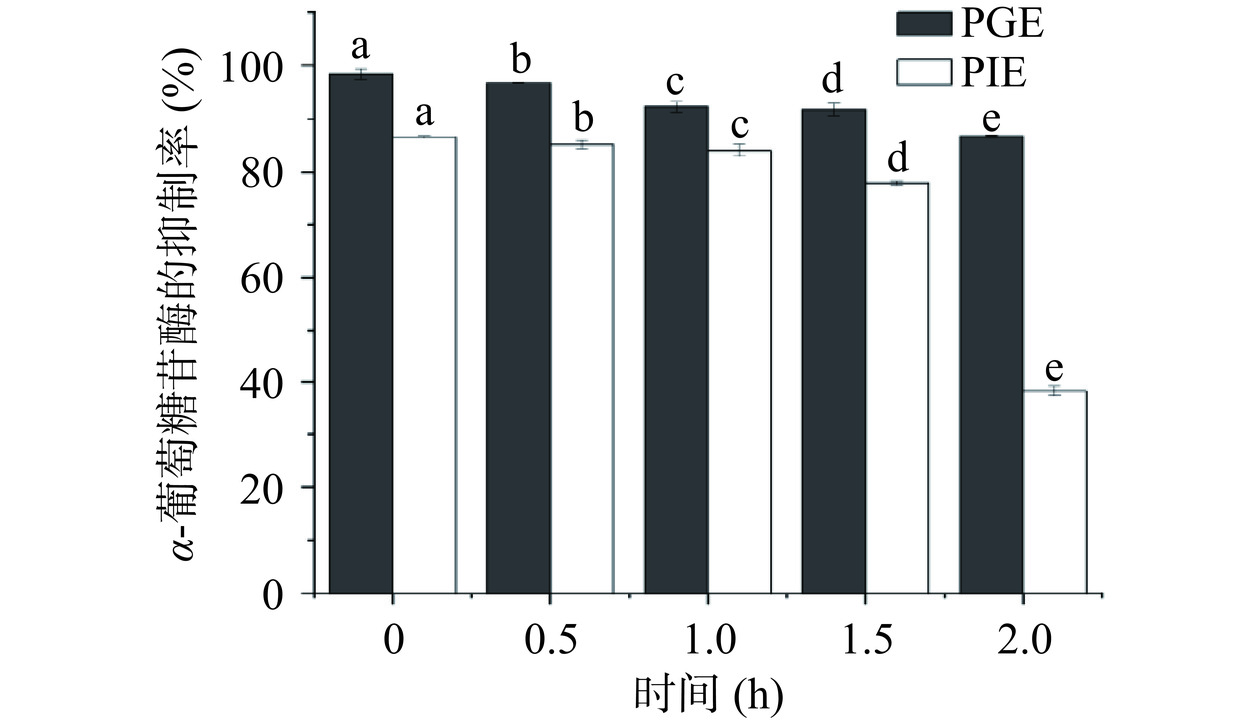
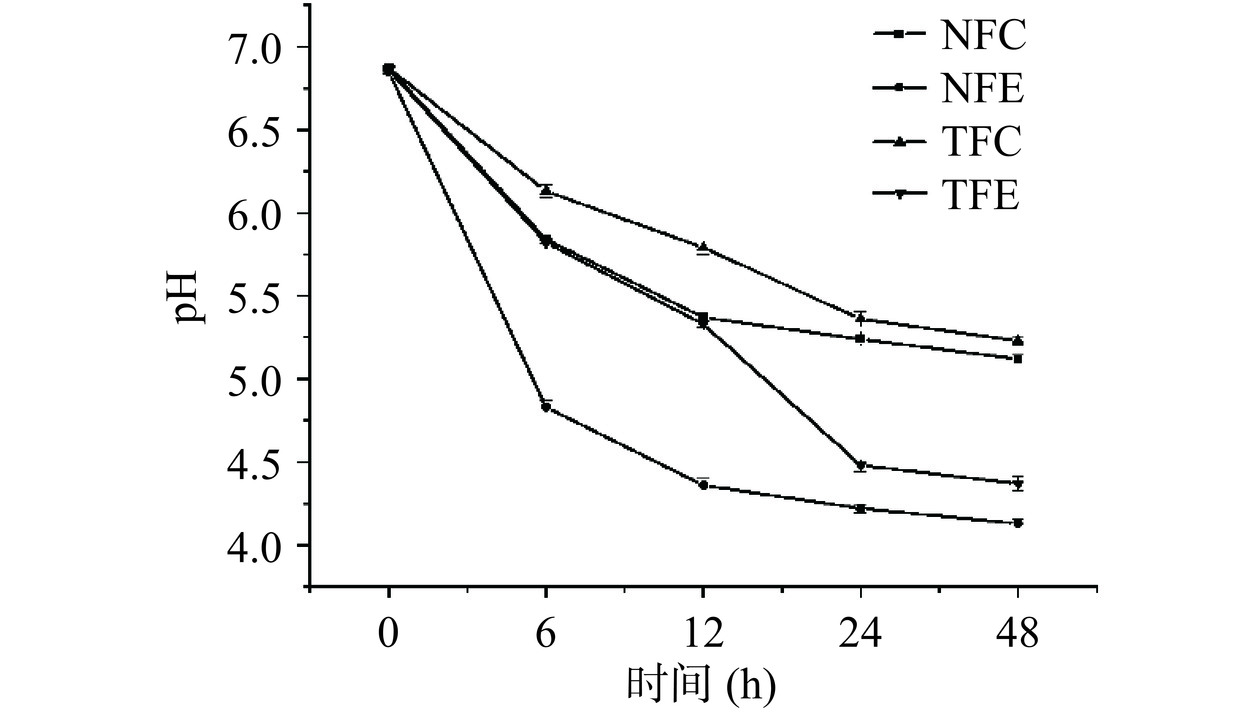
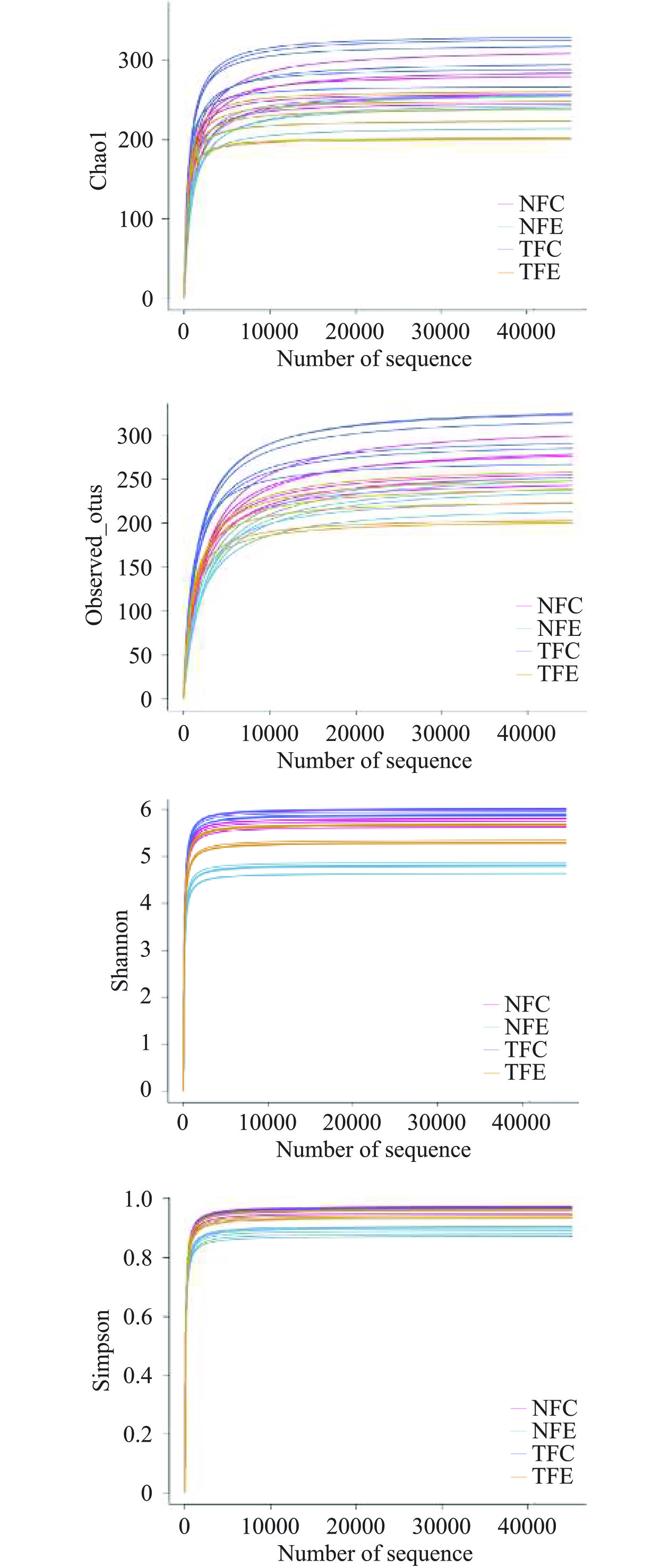
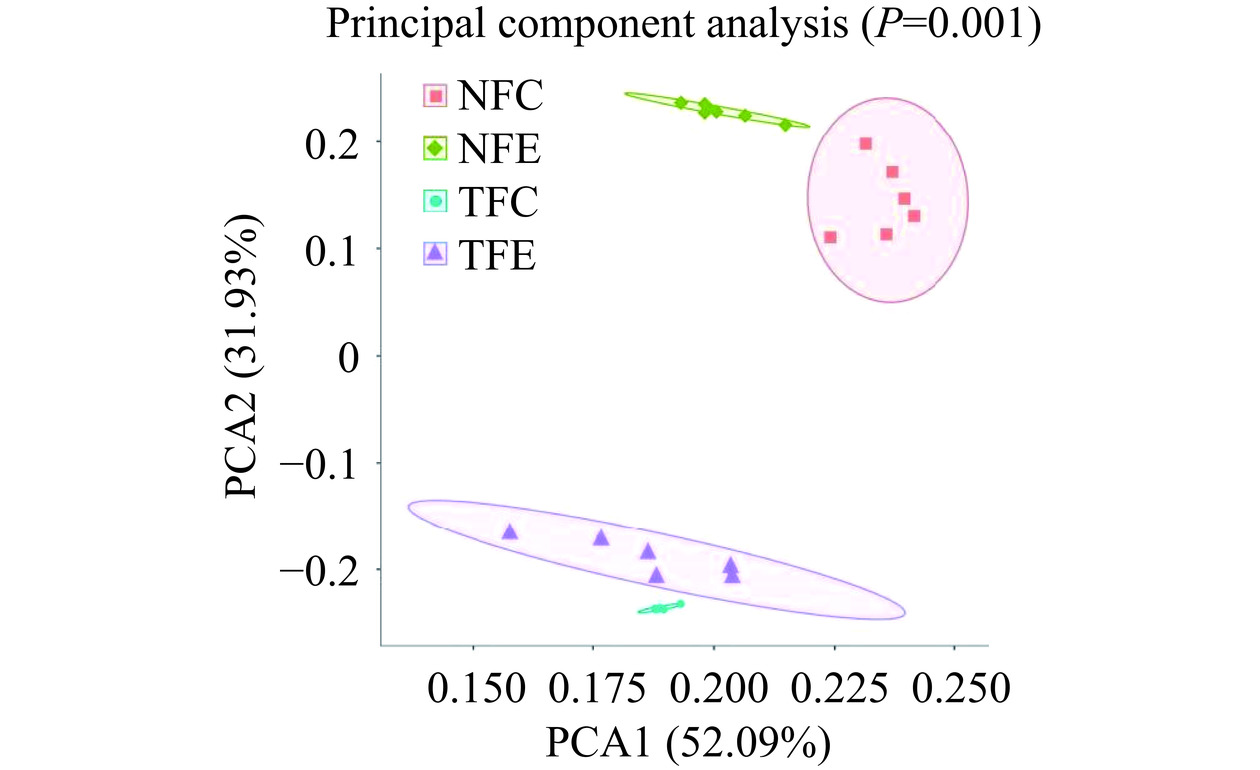
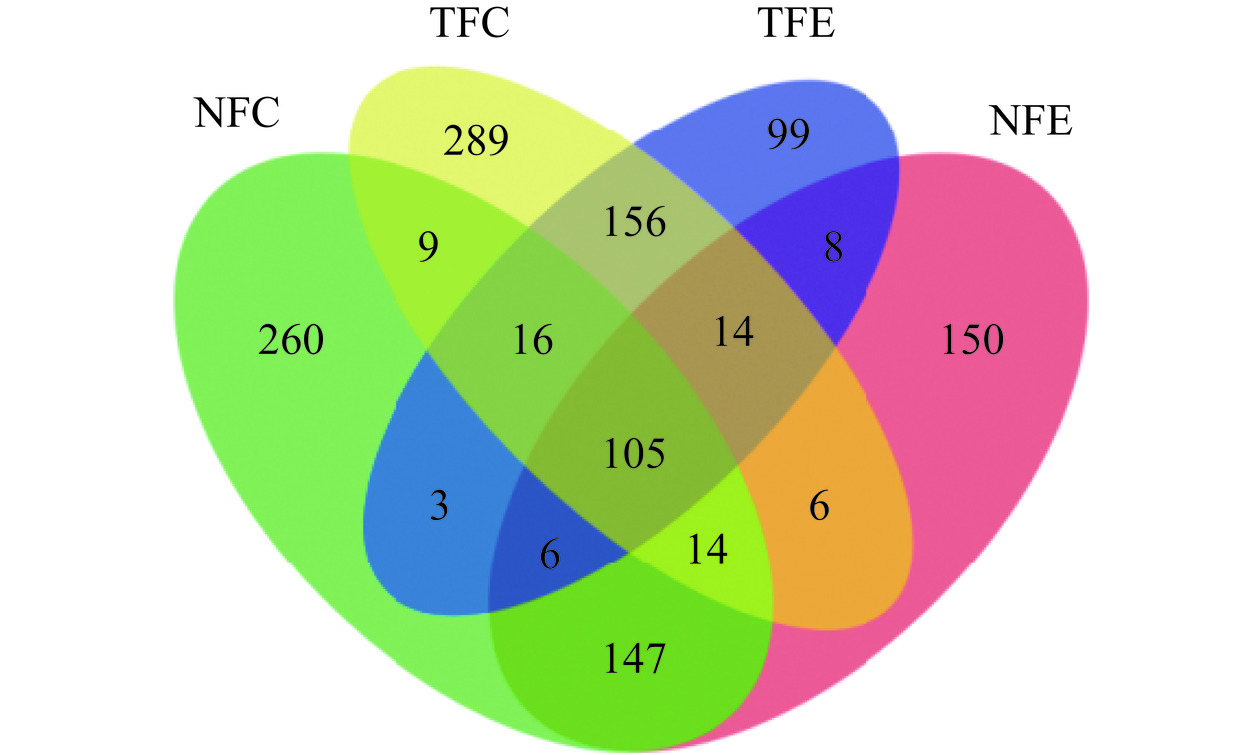
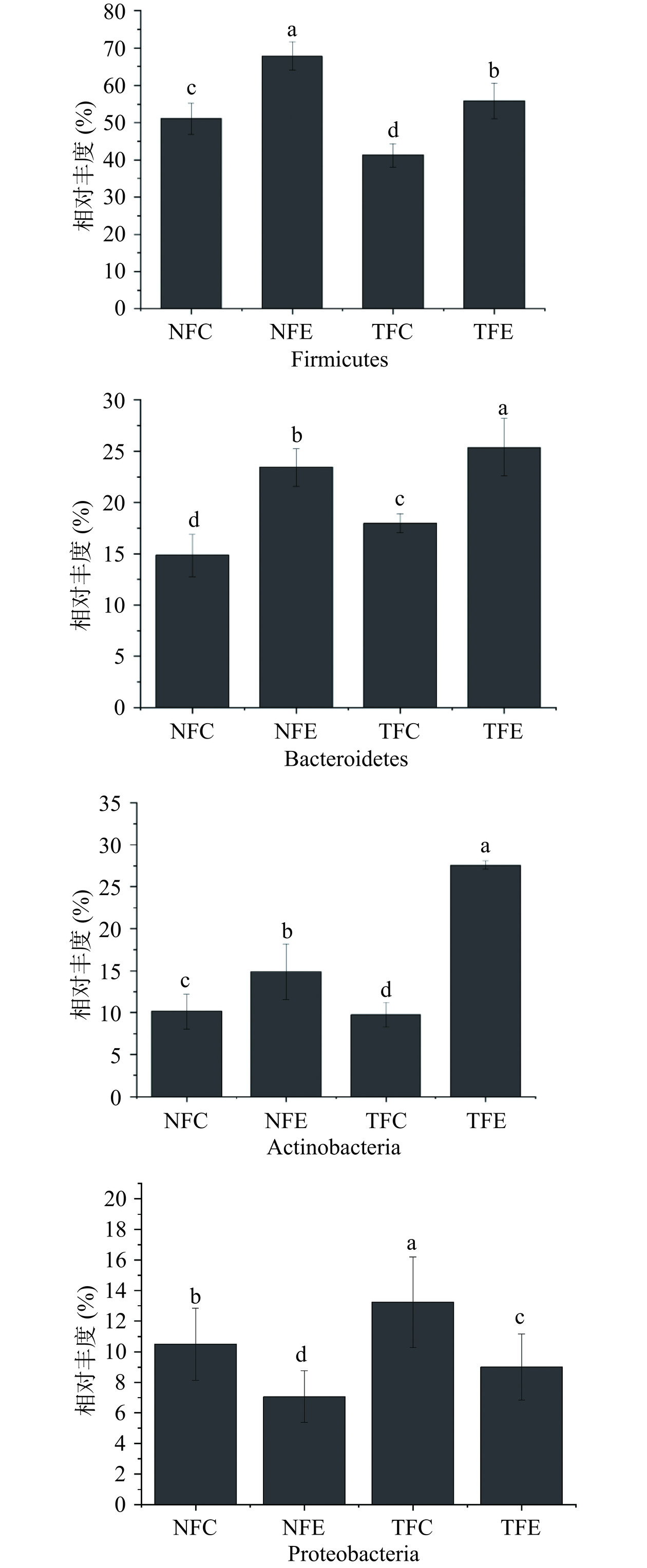
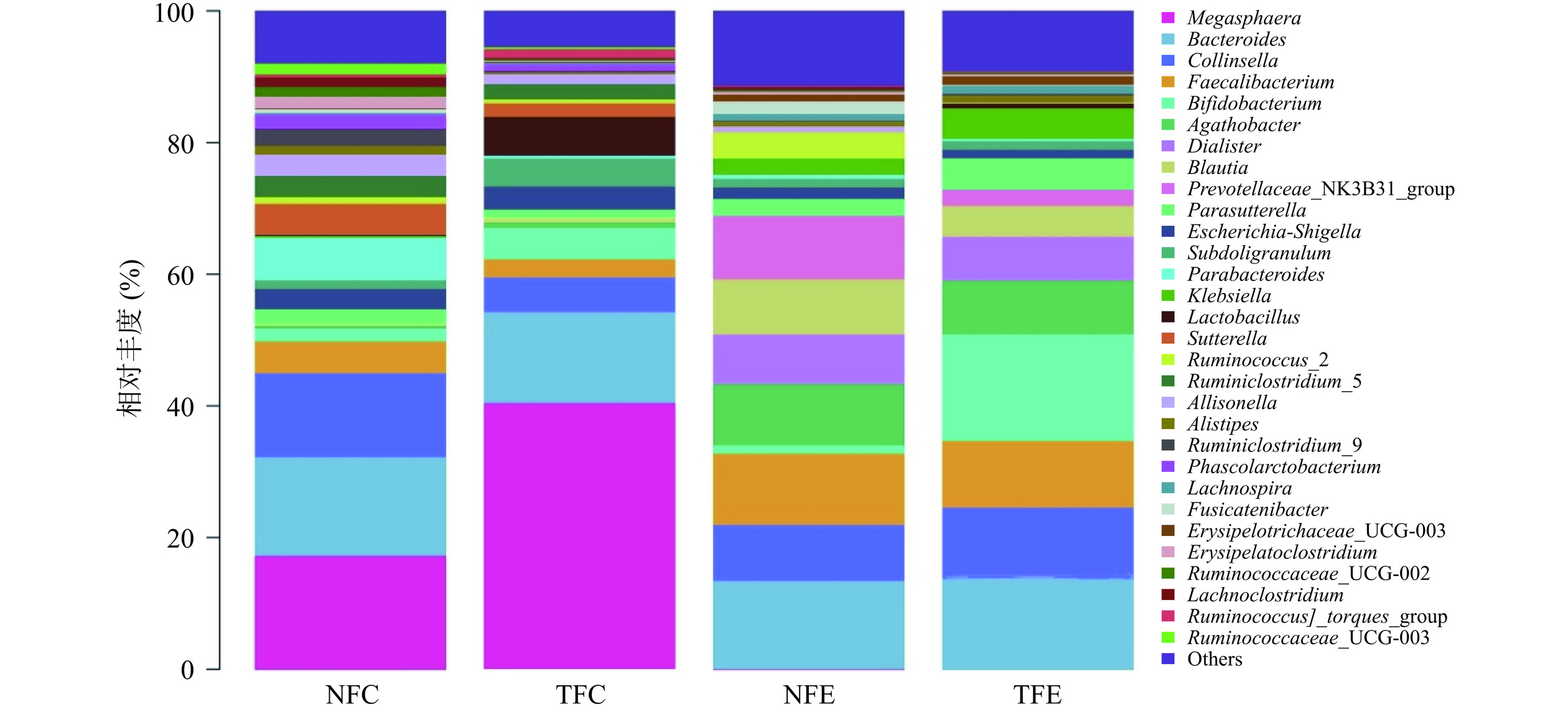
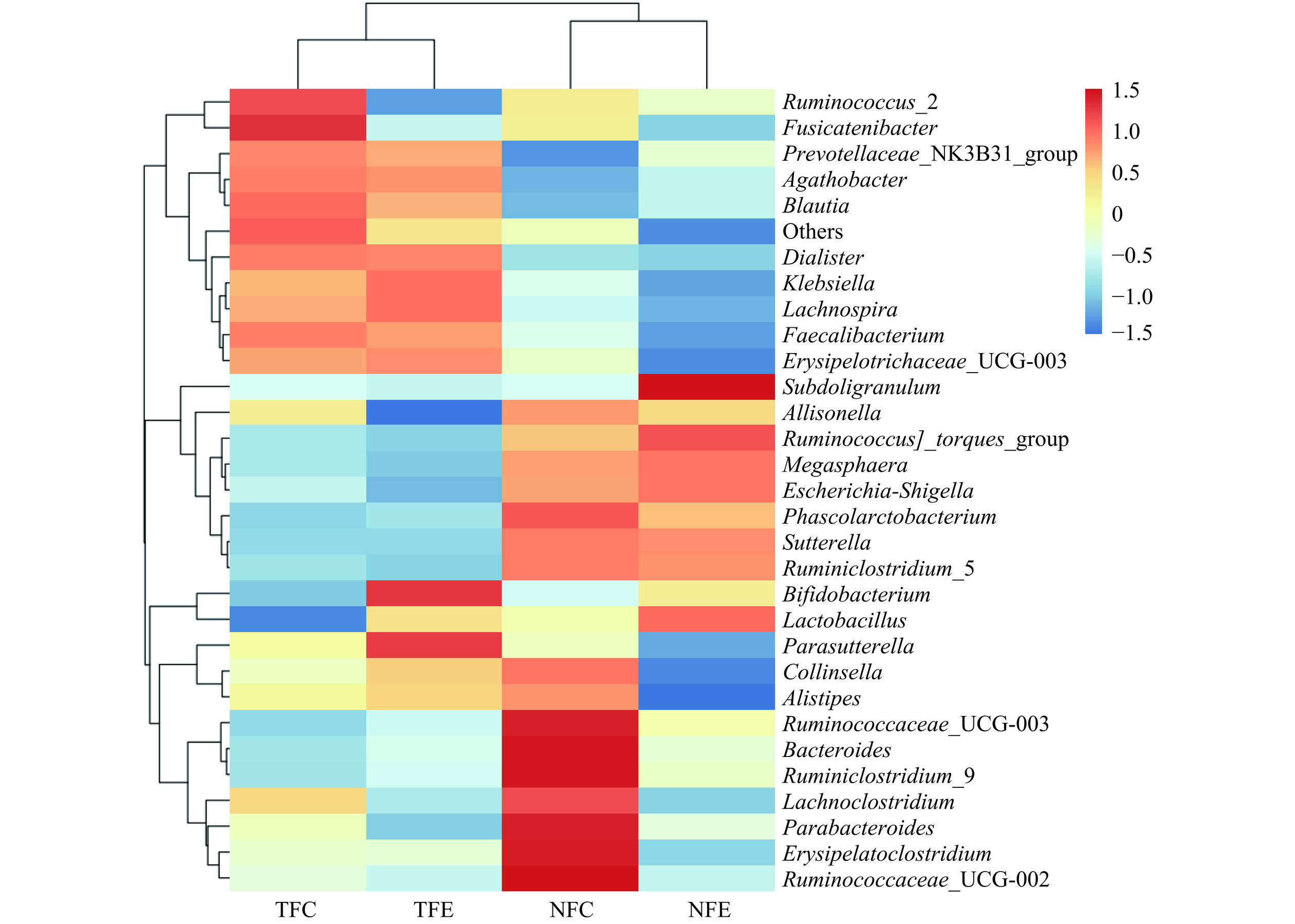
 下载:
下载:



